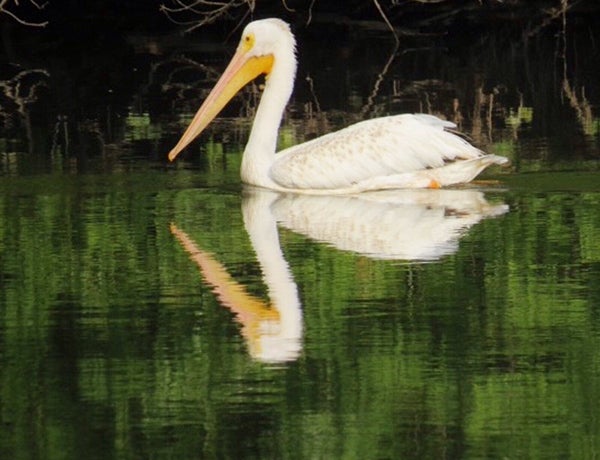DNR: Minnesota pheasant population increased from last year
Published 10:00 am Sunday, September 20, 2015
My neighbor Crandall stops by.
“How are you doing?” I ask.
“Everything is nearly copacetic. My sweet corn crop was fantastic this year. It was two ears to the truckload. I had to listen to my sister Cruella sing, “I’m so miserable without you, it’s like having you here” while I made myself a bowl of raisin bran for lunch. What a job that was. I hate cooking for one. Wind power sure has a lot of fans. I operate on fly power. There is a species of fruit flies that specialize in my smelly sweat socks. I fell asleep in church Sunday. I snored. When I snore, I sound like a McCulloch chainsaw. People are mad at me.”
“You can’t blame them. I don’t suppose they could hear the sermon,” I say.
“No, that’s not why they’re mad at me. They’re mad at me because I kept everyone else awake. The young’uns gave me one of those tablets for my birthday. I think it’s called a mePad.”
“I know. You called me because it wasn’t working,” I say.
“And you told me to reboot it. So I turned it off, but it’s still not working. You know diddlysquat about mePads.”
“You’re supposed to turn it back on again,” I add.
“Oh.”
Nature by the yard
The bird world had quieted, as it does every year at this time. I heard the wings of orioles leaving my yard for the year. Even the house wrens had run out of songs. A friend constructed the nicest of wren houses. He built it, but unlike the Field of Dreams, they didn’t come. We had a welcome sign and a tiny, decorative birdhouse on our deck. The wrens nested in it — until the bottom fell out of the housing market. The floor of the birdhouse dropped to the ground. House wrens don’t care what their houses look like.
The weather cooled and yellow jackets became pests. Maybe it’s because they have to wear those yellow jackets.
The pungent aroma of skunk wafted through the air. A car near our home had hit the animal. The skunk left a legacy. There are people who find the scent enchanting. I’m not one of those.
Common grackle numbers in yards decrease by midsummer, but as they prepare to migrate, they may reappear in large flocks with many young birds. Most people are happy with their absence due to the waste management techniques of grackles. The young produce fecal sacks that the parents carry to water or a freshly washed car for safe disposal.
August 2015 DNR
Roadside Survey
Favorable weather led to a 33 percent increase in Minnesota pheasants compared to last year. That’s 39 percent below the 10-year average and 59 percent under the long-term average. There were 40.7 birds per 100 miles of roadside driven. Habitat loss is the main factor in a long-term population decline. Minnesota lost 153,492 acres of CRP since 2014 and over 247,000 acres since 2007. The number of broods per 100 hens increased 2 percent from 2014. The average number of chicks per brood was 14 percent below the long-term average. The median hatch date was June 9, seven days earlier than 2014 and three days earlier than the 10-year average. The mourning dove index increased 14 percent from 2014 but was below the 10-year and long-term averages. Gray partridges increased 150 percent from 2014 but remained well below the 10-year and long-term averages. Cottontail rabbit index increased 36 percent from 2014 and was 34 percent above the 10-year average and 20 percent beyond the long-term average. White-tailed jackrabbit index continued at historic lows. White-tailed deer index was 33 percent above the 10-year average and 98 percent over the long-term average.
Q&A
“How do birds find enough food?” They are experts at finding food.
“What are the swarms of small insects in my yard?” Swarms are for the perpetuation of the species. Winged ants, males and queens, are harmless. Those I’ve just seen are named large yellow ants, sometimes called citronella ants because of a smell they emit. There are great numbers of flying ants because the failure rate is high. Birds or dragonflies eat many of the swarmers. Large yellow ants tend aphids much as dairy farmers do cows.
“Do we have chiggers in Minnesota?” We do. The six-legged larva of a chigger attaches itself to a variety of hosts to feed. Once engorged, it leaves the host to become a nymph. Both nymph and adult are eight-legged. Nymphs and adults feed on insect eggs or small soil invertebrates. Chiggers require 50 to 70 days to develop from egg to adult, with one generation per year in Minnesota. The larva positions itself atop a blade of grass or fallen leaf in a shaded area and seeks a host. A search of the skin after a walk through tall grass or weeds might reveal tiny red mites moving quickly or attached to skin. Intense itching occurs three to six hours after exposure, followed by skin inflammation. The itching is usually along tops of socks, behind knees or around the waist, and may persist for days. They don’t burrow into the skin, but feed on tissue broken down by their digestive fluids. The host’s skin hardens and a tube forms for the mouthparts. It’s the digestive fluid that causes itching.
Thanks for stopping by
“When you have seen one ant, one bird, one tree, you have not seen them all.” — E. O. Wilson
“I used to live in a room full of mirrors; all I could see was me. I take my spirit and I crash my mirrors, now the whole world is here for me to see.” — Jimi Hendrix
Do good.
Al Batt of Hartland is a member of the Albert Lea Audubon Society. Email him at SnoEowl@aol.com





